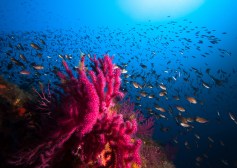A Timeline of Significant Events in Seashore Conservation History
Seashore conservation has become a vital aspect of environmental protection, aiming to preserve coastal ecosystems and their biodiversity. Understanding the history of seashore conservation helps us appreciate the efforts made to protect these precious areas. This article presents a timeline highlighting significant events in seashore conservation history, illustrating how public awareness and policy have evolved over time.
Early Conservation Efforts (19th Century)
The roots of seashore conservation can be traced back to the 19th century when the Industrial Revolution began impacting coastal areas. The first recognized efforts toward conserving natural coastlines emerged through movements aimed at preserving scenic landscapes and public access to beaches. In 1872, Yellowstone National Park was established as the first national park, setting a precedent for future conservation initiatives focused on natural environments, including coastlines.

Establishment of National Parks (20th Century)
As awareness grew about the importance of natural habitats, more regions were designated as protected areas. In 1916, the National Park Service (NPS) was created in the United States to oversee national parks and monuments. This marked an essential turning point for seashores as well; places like Acadia National Park were protected in 1916, showcasing a growing recognition of coastal environments’ ecological significance.
Legislation for Coastal Protection (1960s-1970s)
The mid-20th century saw significant legislative actions aimed at protecting coastal zones from development and pollution. The Coastal Zone Management Act was passed in 1972 by Congress to encourage states to develop comprehensive management programs for their coastal resources. This act recognized that seashores require specific protections due to their unique ecosystems and recreational value.
International Awareness and Cooperation (1980s-1990s)
During the late 20th century, global awareness surrounding environmental issues reached new heights. The United Nations Environment Programme initiated various programs promoting marine environment protection globally. In 1987, World Ocean Day was established to raise awareness about ocean preservation efforts further highlighting the importance of conserving shorelines around the world through international cooperation.
Modern Conservation Challenges & Initiatives (21st Century)
Today’s era faces unprecedented challenges such as climate change which directly threatens our coastal ecosystems through rising sea levels and increased storm intensity. Modern initiatives focus on restoration projects aimed at rebuilding eroded shorelines while educating communities about sustainable practices that protect these vital areas from human impact—highlighting how collective action is more crucial than ever before.
Through this timeline of significant events in seashore conservation history, we can see a clear evolution from early awareness towards structured legal frameworks protecting coastlines today. Continued advocacy is essential for preserving our precious shorelines not only for ecological health but also for future generations who will rely on these ecosystems.
This text was generated using a large language model, and select text has been reviewed and moderated for purposes such as readability.


